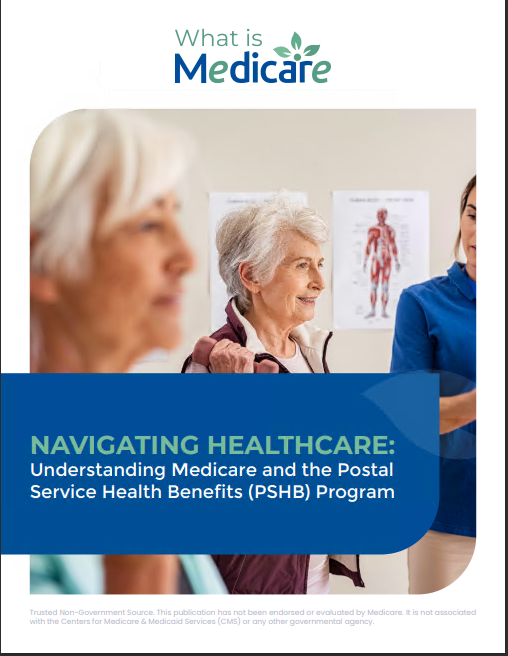Key Takeaways:
-
Medicare Advantage plans often include benefits like dental, vision, hearing, and fitness programs, which Original Medicare doesn’t cover.
-
It’s essential to review the specifics of your Medicare Advantage plan’s coverage, as benefits can vary widely by provider and location.
Understanding Medicare Advantage’s Extra Benefits
Medicare Advantage plans, also known as Part C, provide a way to bundle your Medicare Part A and Part B benefits. But what really sets these plans apart is the additional benefits they often include. While Original Medicare offers robust hospital and medical coverage, it doesn’t cover services like routine dental, vision, or hearing care. Medicare Advantage steps in to fill these gaps, making it an attractive option for many beneficiaries. However, there are some critical things you should know to make the most of these extras.
1. Dental Benefits: Beyond Routine Cleanings
Many Medicare Advantage plans offer dental benefits, which is a big deal considering Original Medicare leaves these costs entirely up to you. But what exactly does “dental coverage” mean?
-
Preventive Care: Most plans include routine cleanings, exams, and X-rays. These basic services are typically covered in full, making it easier to maintain oral health.
-
Comprehensive Services: Some plans go further, offering coverage for procedures like fillings, root canals, dentures, and even implants. However, this level of coverage often comes with annual caps, so you’ll want to know your plan’s limits.
-
Networks Matter: Many plans require you to see in-network dentists. Going out-of-network could mean higher costs or no coverage at all, so check before scheduling an appointment.
2. Vision Coverage: Seeing the Full Picture
Your eyes are an important part of your health, but Original Medicare only covers vision services in specific medical situations, like cataract surgery. Medicare Advantage plans expand your options significantly by including routine eye care.
-
Eye Exams: Most plans offer annual vision exams, helping you catch potential issues early.
-
Eyewear Allowances: Coverage often includes a set amount for glasses or contact lenses. Some plans even cover premium options like bifocals or progressive lenses.
-
Specialty Care: For those who need more than basic exams, some plans cover treatment for chronic conditions like glaucoma or diabetic retinopathy.
-
Frequency and Limits: Keep in mind that allowances for eyewear may only apply once every year or two, depending on your plan.
3. Hearing Benefits: Turning Up the Volume
Hearing health is another area where Medicare Advantage plans shine. Original Medicare provides limited coverage for hearing tests but doesn’t include hearing aids or routine care. Medicare Advantage bridges this gap by offering:
-
Hearing Exams: These plans usually cover annual or semi-annual hearing tests to assess your hearing health.
-
Hearing Aids: Many plans include coverage for hearing aids, though it’s common for plans to offer only specific models. Make sure you know what’s included and what your out-of-pocket costs will be.
-
Fitting and Maintenance: Some plans also cover fitting appointments and periodic adjustments, helping ensure your hearing aids work well over time.
4. Fitness Programs: Staying Active and Healthy
Staying active is key to aging well, and many Medicare Advantage plans support this by including fitness benefits. While Original Medicare doesn’t cover gym memberships, these plans often do.
-
Gym Access: Memberships to national fitness chains or local gyms are a common perk, giving you a convenient way to exercise.
-
Specialized Classes: Some plans offer yoga, pilates, or other wellness classes tailored to seniors.
-
Home Fitness: For those who prefer working out at home, certain plans provide access to online fitness programs or even send fitness equipment directly to you.
5. Transportation and Meal Benefits: Going the Extra Mile
Many Medicare Advantage plans include perks that make daily life easier, particularly if you’re managing chronic health conditions or recovering from a hospital stay.
-
Transportation: Plans may cover rides to and from medical appointments, which can be invaluable if driving is difficult.
-
Meal Delivery: Post-hospitalization meal delivery services are another common benefit. These programs can provide you with nutritious, ready-to-eat meals for a limited time as you recover.
-
Limitations Apply: These benefits often have strict eligibility criteria or limited usage, so it’s important to understand how they work in your specific plan.
6. Supplemental Benefits for Chronic Conditions
If you have a chronic illness, Medicare Advantage plans may offer tailored benefits to help manage your condition. These could include:
-
Special Diet Programs: Plans may provide guidance or meal benefits for managing conditions like diabetes or heart disease.
-
In-Home Support Services: Some plans cover services like personal care assistants or home safety modifications to help you live independently.
-
Remote Monitoring: Innovative benefits like wearable health devices or telehealth services can help you track your condition in real time.
Choosing the Right Plan for You
When it comes to Medicare Advantage plans, the devil is in the details. Not all plans offer the same benefits, and even when they do, the specifics can vary widely. Here are some tips to help you choose the right plan:
-
Review Plan Details: Read the plan’s Evidence of Coverage (EOC) document to understand exactly what’s included and any restrictions.
-
Check Provider Networks: Make sure the dentists, eye doctors, hearing specialists, and other providers you prefer are in-network.
-
Understand Costs: Be aware of any deductibles, copayments, or annual maximums that apply to extra benefits.
-
Consider Your Needs: If you don’t currently need a specific benefit, think about whether it’s worth paying for one in case your needs change.
Important Timelines to Keep in Mind
Understanding the enrollment periods for Medicare Advantage plans is crucial. Here are the key dates to remember:
-
Initial Enrollment Period (IEP): This is a 7-month window that begins three months before you turn 65, includes your birthday month, and extends three months after.
-
Medicare Open Enrollment Period: From October 15 to December 7 each year, you can join, switch, or drop a Medicare Advantage plan. Changes take effect on January 1 of the following year.
-
Medicare Advantage Open Enrollment Period: From January 1 to March 31, you can switch to another Medicare Advantage plan or return to Original Medicare if your current plan isn’t meeting your needs.
What Medicare Advantage Doesn’t Cover
Despite all the added benefits, it’s important to understand what Medicare Advantage plans typically don’t cover:
-
Experimental Treatments: These are generally not included.
-
Non-Medical Services: Benefits like cosmetic surgery or long-term custodial care are usually excluded.
-
Out-of-Network Costs: If you go outside the plan’s network for non-emergency care, you may face significant out-of-pocket costs.
Getting the Most Out of Your Plan
To fully benefit from your Medicare Advantage plan, take a proactive approach:
-
Use Preventive Services: Take advantage of free or low-cost screenings and wellness visits included in your plan.
-
Track Your Benefits: Many plans provide online portals or mobile apps to help you keep track of your benefits and usage.
-
Stay Informed: Keep an eye out for mid-year notifications about unused benefits, which can remind you to schedule services before they expire.
Making the Most of Your Medicare Advantage Benefits
Medicare Advantage plans offer a host of additional benefits that can significantly enhance your healthcare experience, from dental and vision care to fitness programs and more. However, these extras come with rules and limitations that require careful consideration. By understanding your plan’s specifics and taking advantage of available resources, you can make sure your coverage meets your unique needs.









